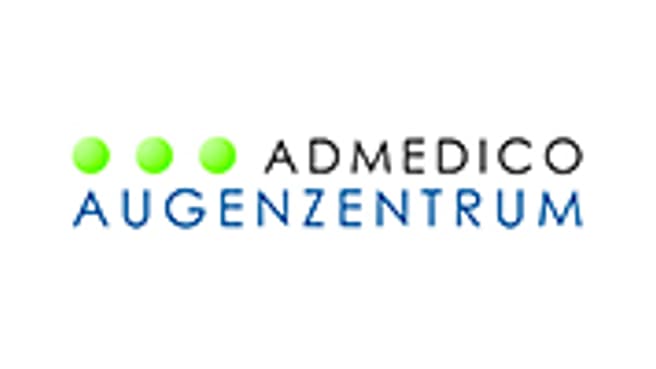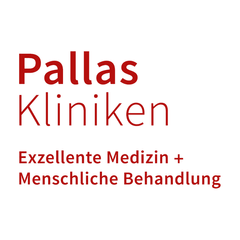Please use Microsoft Edge, Google Chrome or [Firefox](https://getfirefox. com/).
ADMEDICO Augenzentrum GmbH (Solothurn)
Do you own or work for ADMEDICO Augenzentrum GmbH?
About Us
Philosophy The customers should feel comfortable with us
We at the ADMEDICO Eye Center strive to offer our customers a comprehensive service. You will be competently advised by us and should feel comfortable. We want to be an understanding and helpful partner for you. Our demand for high quality services is high. For this reason we only work with carefully selected partners.
Our team
Dr. med. Helga Reinshagen Specialist FMH for Ophthalmic Surgery, especially Cataract Surgery / Medical Director
Nicole Fichter, M.D. Specialist FMH for Ophthalmic Surgery, especially Reconstructive, Oculoplastic and Orbital Surgery / Medical Management
Dr. Christoph Lengwiler / Docotor of Optometry
Tabea Karrer Orthoptist
JeannineBolliger Orthoptist
Tina Rieder Orthoptist
Marie Louise von Arx Nursing specialist AKP Valentina Frara Medical Practice Assistant Romina Hiltbrunner Medical Practice Assistant
Michelle Wagner Practice Assistant Karin Müller Head of Finance and Personnel
Eye diseases
- Amotio retinae or retinal detachments
- Astigmatism or astigmatism
- Blepharitis or inflammation of the eyelid margins
- Dry eye
- Diabetic retinopathy - the diabetes of the eye
- Glaucoma or green star
- Hyperopia or farsightedness
- Cataract or cataract
- Conjunctivitis or conjunctivitis
- Myopia or nearsightedness
- Presbyopia or presbyopia
- Strabismus or squinting of the eyes
- Uveitis or choroiditis
- Graves' disease, endocrine orbitopathy
Symptoms of Graves' disease
Hyperthyroidism Graves' disease is a systemic disease and can manifest with different symptoms in different organ systems. The disease can creep into the lives of sufferers almost unnoticed. However, there can also be a seizure-like onset of the disease with acute symptoms. In addition to symptoms of hyperthyroidism, symptoms of the immune disorder also occur. However, Graves' disease can occasionally occur without symptoms of hyperthyroidism, or even with symptoms of hypothyroidism. All variants are therefore theoretically possible. Sometimes the patients get used to the symptoms, which may be mild at the beginning, and attribute them to special life circumstances or stress. If the disease is not recognized, hyperthyroidism can lead to a life-threatening condition with hormone toxicity (thyrotoxic crisis) due to massively increased hormone levels in the blood. In addition to the signs of alteration of hormone metabolism, symptoms may occur due to the action of antibodies in the body of the diseased. After initiation of hyperthyroidism therapy, hypothyroidism often occurs in the further course. In order to be able to recognize the symptoms of hyperthyroidism and/or hypothyroidism as early as possible and consequently treat them, the affected persons themselves should be aware of the symptoms and report to the doctor when they occur.
A special feature of Graves' disease are the symptoms when the eyes are involved. The cause of the eye disease (endocrine orbitopathy) is also thought to be the production of antibodies against antigens (special protein structures on the cell surface) of the eye muscles and other tissues of the eye sockets. There is a close relationship to the amount of thyroid hormone in the blood. Some people suffering from Graves' disease may also have other autoimmune diseases. It is always important to consider searching for or ruling out other autoimmune diseases in cases of unclear and confusing symptoms in Graves' disease.
Further information on Graves' disease can be found at Symptoms of hyperthyroidism Symptoms of hormone toxicity (thyrotoxic crisis) Symptoms of immune disease Symptoms of hypothyroidism Symptoms of eye disease Diabetes and thyroid disease
Cataract surgery
Cataract surgery is one of the most common and best standardized surgeries in the world.
Cataract cannot be treated with medication. The principle of the operation is based on the removal of the clouded lens and its replacement with an artificial lens (intraocular lens). The necessary refractive power of this artificial lens can be precisely calculated in advance based on the length of the eyeball and the curvature of the cornea.
One eye is always operated on first. If the other eye is also affected, the second operation can be performed a few days later.
The eye is only locally anesthetized before the operation, i.e. made insensitive by eye drops. General anesthesia is necessary only in exceptional cases. During the operation, a 1.8 to 2.5 mm small incision is made at the edge of the cornea. Through this incision a tiny piece of the anterior capsule is removed. Then, using a special ultrasound device, the contents of the lens are finely crushed (phacoemulsification), removed with a suction rinsing device, and removed. What remains is the ultra-thin capsular bag, which serves as a support for the artificial lens. Next, the artificial replacement lens is inserted. It is made of an elastic transparent material that is pushed through the tiny opening and then unfolds and centers itself. The access incision is so small that it does not need to be closed by a suture, but closes like a valve.
The artificial lens remains in the eye for life, meaning it does not need to be removed or replaced later.
There are different types of lenses:
Standard lens The costs for the standard lens are covered by the health insurance. Depending on the strength, you can usually see clearly with this lens either at a distance or at close range, if necessary without glasses. For the other distance, you will need corrective glasses.
Aspherical lens This lens improves contrast vision, especially in low light conditions such as twilight, night or fog.
Toric lenses for astigmatism Astigmatism can be corrected by individually calculated and manufactured artificial lenses. As a result, the perception of the environment is less distorted and blurred.
Combined near and distance lenses In certain cases, this artificial lens enables distance and near vision that is largely free of glasses. If you are interested, a comprehensive preliminary examination will determine whether you are a suitable candidate.
Our partners We work intensively with the following partners:
- EUGOGO EUropean Group on Graves Orbitopathy
- Orbita Centrum Amsterdam
- Eye Clinic of the Johannes-Gutenberg-University Mainz
- Hirslanden Clinic Aarau
- Eye Clinic Lucerne
- University Eye Hospital Basel
- Solothurn Hospitals AG
Offer
- Conservative treatments
- Ophthalmic optics / school of vision
- Treatment of special diseases
- Plastic and aesthetic surgery
- Squint surgery
- Botox treatments
This text has been machine translated.
Languages
Location and contact
ADMEDICO Augenzentrum GmbH
-
office address
Gurzelngasse 14 4500 Solothurn
-
Phone
0326... Show number 032 623 39 56 *
- Visit site Visit site
- * No listing required
reviews
Do you wish to rate "ADMEDICO Augenzentrum GmbH"?

4 reviews from older local.ch. archives
Data from June 2019
* These texts have been automatically translated.
Other listers

ADMEDICO Augenzentrum GmbH



